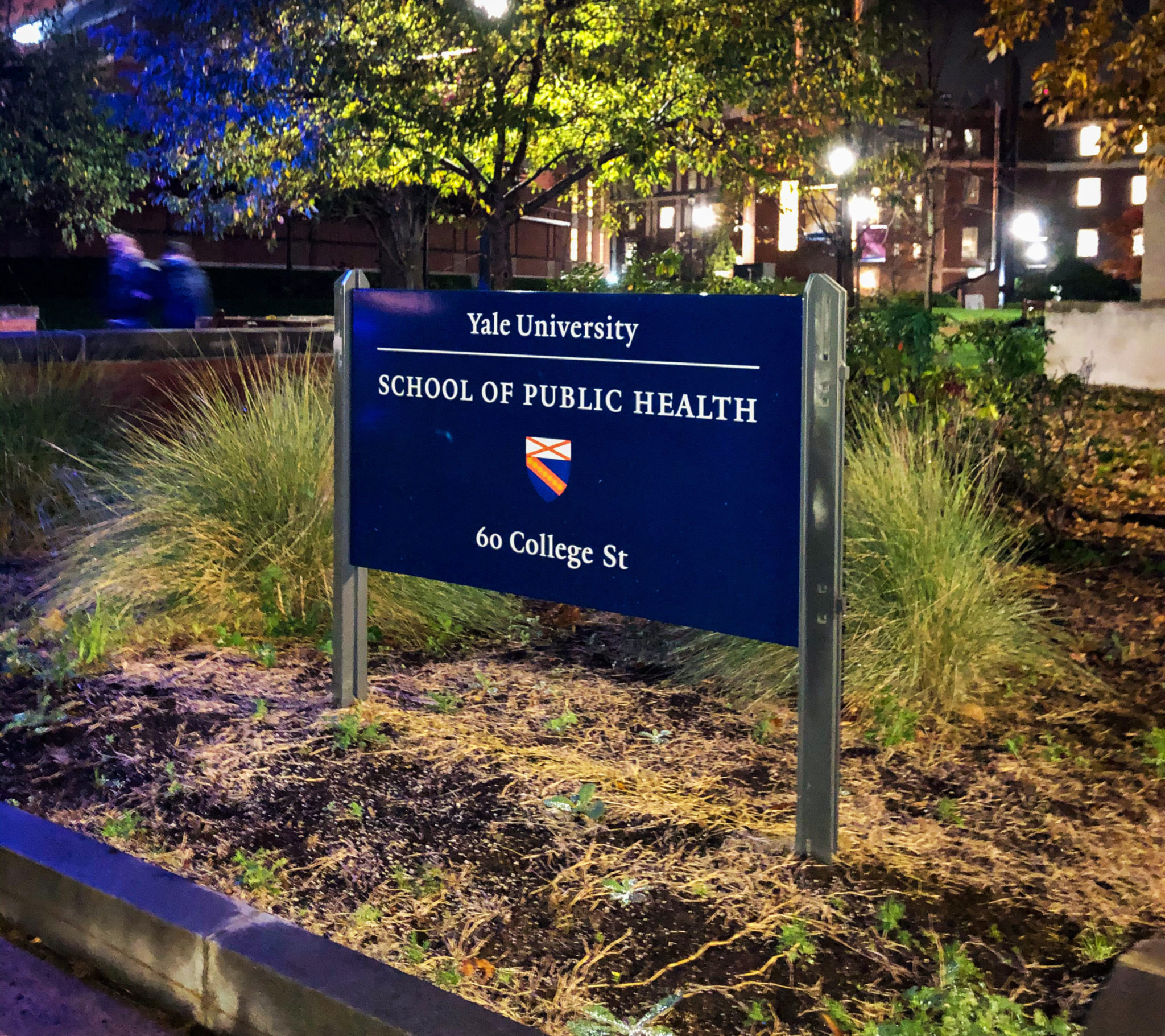YSPH study finds that Black Medicare patients have higher 10-year death rate after strokes
Black Medicare patients have a risk of death post-stroke of 76.4 percent, which is slightly higher than the national statistic of 75 percent, according to a recent Yale School of Public Health study.

Jessie Cheung, Staff Photographer
A study conducted by researchers at the Yale School of Public Health found that 76.4 percent of Black Medicare patients die during the 10 years after a stroke event, in comparison to the 75.4 percent death rate for white patients, 70.3 percent death rate for people of other races or ethnic groups and 75 percent overall death rate among Medicare patients.
The study, led by Judith Lichtman MPH ’88 PhD ’96, department chair of chronic disease epidemiology, utilized data from national fee-for-service Medicare billing claims of patients over 65 years of age who were discharged from the hospital with a diagnosis of ischemic stroke — which is caused by an artery blockage that prevents blood flow to the brain. The dataset spanned 2005 to 2016 and described the information of 744,044 Medicare beneficiaries. The study’s results highlight the racial disparities in the treatment of ischemic stroke, indicating that even after adjusting for comorbidities, Black people have a higher risk of dying within 10 years of a stroke.
“When we started to look at it over time, we noticed that this separation by race really seemed to happen within the first year [after stroke],” Lichtman said. “So, really, early in the recovery, it looked like there seemed to be these differences with a little bit of a higher mortality for Black patients who had an ischemic stroke. After adjusting for all of these comorbidities, we found there was an increased risk of about 4 percent higher for Blacks, so the risk of dying at 10 years was 4 percent higher for Blacks as compared to whites.”
The study graphed survival curves, which showed the survival rates of patients from discharge to 10 years after their stroke, according to Lichtman. These curves of survivorship were shown to separate early, with the white survival curve tracking higher than that of Black patients, and this trend continued throughout the 10-year period.
Lichtman explained that these results indicate that there is something going on in the first year following the stroke that might set the differing trajectories for Black and white patients in motion.
Lichtman said the study’s results have the potential to inform important policy decisions. She emphasized the importance of ensuring that all elderly patients can equitably access resources for effective prevention of comorbidities and other complications that can arise from an acute stroke event, especially in the first year following the event.
“I think what it shows us is that we often think of the acute stroke event, but I think this is telling us that that early recovery period in the first year is really important,” Lichtman said. “And I think it gives us clues that we really need to look at whether or not there are differences in utilization and access to care in the first year after having an ischemic stroke. By that I mean, do we have facilities being accessed equally? Are people going for their neurology visits? Are people going to their appointments for secondary prevention? There must be something in that early window of care that really sets somebody up for their long-term trajectory.”
Lichtman’s team of research scientists who analyzed the data for the study included Erica Leifheit GRD ’10 and graduate student Andrew Arakaki MPH ’20.
Arakaki emphasized that the study revealed racial differences in survival that were evident within the first year of follow-up, which indicates that race differences in secondary prevention and rehabilitation services immediately following discharge may impact long-term survival experiences for Black patients.
“This study underscores the need to better understand contributors of racial disparities in long-term mortality following ischemic stroke beyond sociodemographic and clinical characteristics,” Arakaki wrote in an email to the News. “There could be differences in healthcare utilization or care seeking behaviors that drive these differences.”
This study was among the first United States-based studies that aimed to assess the 10-year outcome in terms of mortality following ischemic stroke in elderly patients, according to Arakaki. Lichtman said that many other investigations study stroke as an acute event and look at its impacts in the short term, but it is also important to analyze outcomes of strokes after a few years.
Lichtman said that the study’s results demonstrate the need to “dig deeper” into the level of care that stroke survivors receive within the first year after their medical incident.
Another collaborator, Larry Goldstein, is a neurologist at the University of Kentucky who worked on the clinical context of the study and aided with data interpretation.
Goldstein and Arakaki were not too surprised by the results. According to Arakaki, the overall 10-year mortality rate in the study was consistent with rates observed in international cohorts of elderly adults. However, both researchers said most of these studies were done in racially homogenous European populations.
“African Americans have a higher burden of stroke than Americans from other self-identified race-ethnic groups,” Goldstein wrote in an email to the News. “Continuing to aggressively address opportunities for primary and secondary prevention are important strategies.”
The study was funded by the American Heart Association and the National Institute on Aging of the National Institutes of Health.
Anjali Mangla | anjali.mangla@yale.edu










